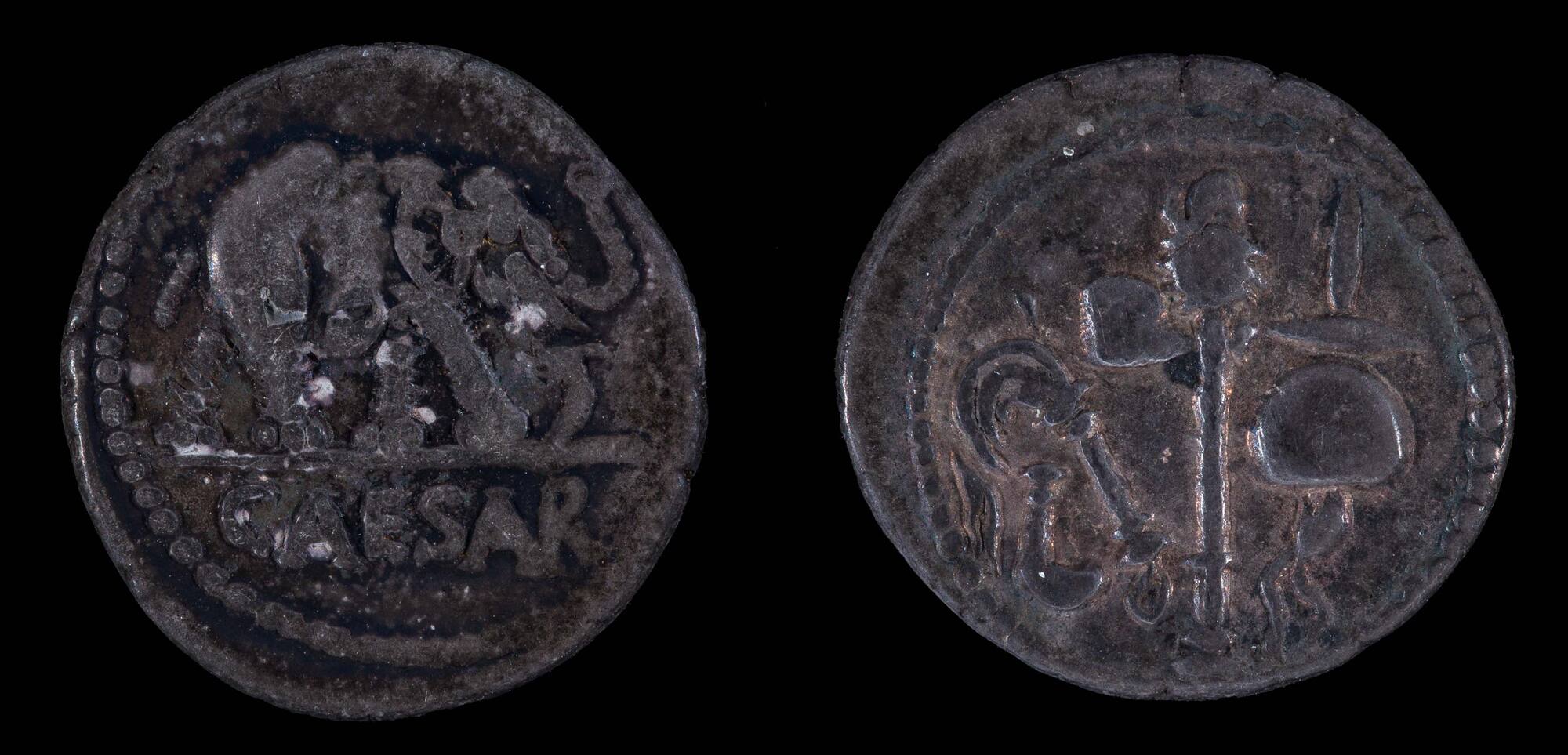
Object Details
Culture
Roman
Date
49–48 BCE
Medium
Silver
Dimensions
Diameter: 1 inch (2.5 cm)
Credit Line
Gift of Mark M. and Lottie Salton
Object
Number
2000.175.245
This coin was struck by Julius Caesar not long after he “crossed the Rubicon” to seize power in (…)
This coin was struck by Julius Caesar not long after he “crossed the Rubicon” to seize power in Italy at a crucial moment in the Roman Civil Wars. The choice of an elephant may relate to his rivalry with Pompey the Great: Pliny tells us elephants were first used in Rome to draw Pompey’s triumphal chariot in 55 BCE but could not fit through the city gates. Moreover, when forced to fight in the arena, the elephants made such distressing entreaties that the Roman audience “burst into tears and invoked curses on the head of Pompey” (8.21). On his denarius, Caesar turns Pompey’s powerful animal avatar against him, appropriating the elephant as his own symbol.
Pliny places the elephant first in his discussion of land animals in Book 8, both for its size and because “it is the nearest to man in intelligence”: elephants not only understand language, remember duties, and have their own cultural practices, including funerary rituals, but in one purported case could even write in Greek! Pliny also helps us to interpret this coin’s iconography, in which an elephant is about to trample on a serpent. He describes the perpetual enmity between these two animals in the context of the arena: “What other cause could anybody adduce for such a quarrel save Nature arranging a match between a pair of combatants to provide herself with a show?” (8.34).
(Verity J. Platt, “Wonder and Wakefulness: The Nature of Pliny the Elder,” exhibition organized by the Herbert F. Johnson Museum of Art, curated by Andrew C. Weislogel and Verity J. Platt, presented at the Johnson Museum January 21–June 11, 2023)












